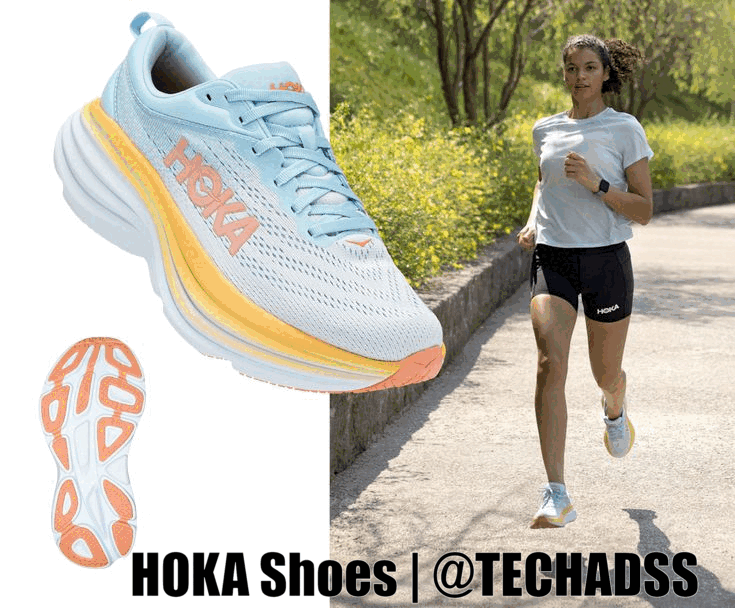Introduction
In the ever-expanding universe of athletic footwear, one brand has emerged as a beacon of innovation and comfort – Hoka. Renowned for its distinctive design and superior cushioning, Hoka shoes have gained a cult following among athletes and casual users. This article delves into the world of Hoka shoes, exploring what makes them unique, debunking myths about ownership, understanding the price tag, and tracing the origins of these revolutionary footwear.
What is so particular about Hoka shoes?
Distinctive Design and Maximalist Approach
Hoka shoes are instantly recognizable for their unique design – a chunky sole that provides maximal cushioning and support. This maximalist approach sets Hoka apart from other athletic shoe brands, offering a different experience for runners and walkers. The thick midsole enhances comfort and helps reduce the impact on joints, making Hoka an attractive choice for those seeking a cushioned ride.
Enhanced Stability and Support
Beyond the eye-catching design, Hoka shoes prioritize stability and support. The broad base of the sole contributes to a more stable platform, reducing the risk of ankle rolls and enhancing overall balance. This feature particularly benefits long-distance runners and individuals with specific gait patterns.
Innovative Materials and Technology
Hoka doesn’t just rely on looks – the brand incorporates innovative materials and technology into its shoes. From responsive foams that provide energy return to strategic placement of reinforcements for durability, Hoka shoes are engineered to meet the demands of various athletic activities.
Does Nike own Hoka?
Rumors often circulate within the sneaker community, and one common question is whether industry giant Nike owns Hoka. However, the reality is quite different.
Established in 2009 by French designers Nicolas Mermoud and Jean-Luc Diard, Hoka One One gained popularity for its unique designs and performance-driven footwear. In 2013, Deckers Brands, a California-based corporation with a footwear and fashion brand portfolio, acquired the company. Nike, known for its dominance in the athletic footwear market, is not Hoka’s parent company.
Why is Hokas so expensive?
The price tag attached to Hoka shoes can raise eyebrows, prompting the question: Why are Hokas so expensive? Several factors contribute to the relatively higher cost of Hoka footwear.
Quality Materials and Construction
Hoka shoes are crafted with an emphasis on quality materials and meticulous construction. High-performance foams, durable outsoles, and advanced technologies all contribute to the overall durability and functionality of the shoes. Investing in top-tier materials ensures that Hoka shoes maintain their performance over the long haul.
Research and Development
Hoka’s commitment to innovation requires substantial investment in research and development. The brand continually seeks ways to improve its designs, enhance comfort, and push the boundaries of athletic footwear. This dedication to advancement comes with a cost, which is reflected in the price of the final product.
Specialized Design for Performance
The unique design philosophy of Hoka shoes, particularly the maximalist approach, necessitates specialized engineering and design considerations. This focus on performance-oriented features adds to the production costs, contributing to the overall price of Hoka footwear.
While the initial investment may be higher, many users attest that the comfort, durability, and performance offered by Hoka shoes justify the price.
Where is Hoka made?
Understanding the origin of a product is essential for many consumers, and Hoka is no exception. As of my last knowledge update in January 2022, Hoka shoes were manufactured in various locations, including China, Vietnam, and Ethiopia. It’s not uncommon for global footwear brands to have production facilities in different countries to optimize manufacturing processes and costs.
It’s worth noting that the production location can vary depending on the specific model and collection within the Hoka product line. Checking the labeling on the shoe or referring to the brand’s official information can provide accurate details about the manufacturing origin of a particular pair of Hoka shoes.
Hoka Shoe: Your Guide to the Best Fit 2023 Edition
Embarking on a journey to find the ideal running shoe involves navigating the diverse world of Hoka footwear. As we enter the 2023 edition, the quest for the perfect Hoka shoe becomes even more exciting. This guide will streamline your decision-making process, helping you discover which Hoka shoe best fits your unique needs and preferences.
Understanding Hoka’s Diverse Lineup
1. The Clifton Series: Versatile Comfort
Known for its balanced cushioning and lightweight design, the Clifton series is popular among runners seeking versatile comfort. Whether you’re a seasoned marathoner or a casual jogger, exploring the latest additions to the Clifton lineup can unveil the perfect blend of support and agility.
2. The Bondi Series: Maximum Cushioning for Endurance
If maximum cushioning for long-distance runs is your priority, the Bondi series is worth exploring. These shoes provide exceptional shock absorption, making them an excellent choice for runners logging high mileage. Dive into the 2023 edition to discover the latest innovations in Bondi’s quest for ultimate comfort.
3. The Rincon Series: Lightweight Speedsters
The Rincon series offers a lightweight solution for those searching for speed without compromising cushioning. Explore the updated features and design tweaks in the 2023 edition, promising a responsive ride that caters to the need for speed.
Tailoring Your Choice to Your Running Style
1. Neutral Runners: Embracing the Clifton Comfort
The Clifton series is a natural choice if you have a neutral running gait. Its versatile design accommodates a wide range of runners, providing cushioning without excessive stability features.
2. Long-Distance Enthusiasts: Bondi’s Endurance Boost
Runners covering extensive distances will find a reliable companion in the Bondi series. Dive into the 2023 updates to uncover how Bondi continues to redefine endurance running with its plush cushioning and durability.
3. Speed Seekers: Rincon’s Featherlight Performance
The Rincon series is tailored for speed for those chasing personal records and seeking a lightweight option. Explore the 2023 edition to witness how Rincon maintains its reputation as a go-to choice for runners prioritizing agility.
Considering Terrain and Surface
1. Road Running: Clifton’s All-Terrain Comfort
The Clifton series offers a well-rounded solution if your runs predominantly occur on roads. Its design caters to various surfaces, ensuring a smooth and comfortable ride regardless of the pavement conditions.
2. Trail Running: Exploring Hoka’s Trail Offerings
For trail enthusiasts, Hoka provides a range of options, including the Speedgoat and Challenger series. Dive into the 2023 lineup to discover how Hoka addresses the unique challenges of trail running, from rugged terrains to unpredictable conditions.
Conclusion
Hoka has carved a niche by redefining comfort and performance in the dynamic world of athletic footwear. The distinctive design, innovative technology, and commitment to quality make Hoka shoes stand out in a crowded market. Despite the premium price tag, the investment often pays off in terms of durability and unparalleled comfort, making Hoka a preferred choice for many athletes and enthusiasts. As the brand continues to evolve, it remains at the forefront of the comfort revolution in athletic footwear.
Must Read: How To Chose Shoes From King Of Kicks
FAQs: Hoka
Q: What does the name “Hoka” mean?
A: Hoka is a Maori word that translates to “time to fly” in English, reflecting the brand’s commitment to providing a lightweight and comfortable running experience.
Q: Who founded Hoka?
A: Hoka One One was founded in 2009 by French designers Nicolas Mermoud and Jean-Luc Diard, aiming to revolutionize the running shoe industry with their innovative approach to design.
Q: Does Nike own Hoka?
A: No, Hoka One One is not owned by Nike. In 2013, Hoka was acquired by Deckers Brands, a California-based corporation with a footwear and fashion brand portfolio.
Q: What makes Hoka shoes unique?
A: Hoka shoes are known for their distinctive maximalist design, providing enhanced cushioning and support. The unique geometry of the midsole sets Hoka apart, offering a comfortable and stable platform for runners.
Q: Which Hoka series is best for neutral runners?
A: The Clifton series is an excellent choice for neutral runners. It provides balanced cushioning without excessive stability features, catering to a wide range of running styles.
Q: Are Hoka shoes suitable for trail running?
A: Yes, Hoka offers specific models designed for trail running, such as the Speedgoat and Challenger series. These shoes are equipped to handle the challenges of rugged terrains.
Q: Why are Hoka shoes relatively more expensive?
A: The relatively higher cost of Hoka shoes is attributed to the use of quality materials, advanced technology, and a commitment to research and development. The investment reflects the brand’s dedication to performance and durability.
Q: Where are Hoka shoes manufactured?
A: As of my last knowledge update in January 2022, Hoka shoes are manufactured in various locations, including China, Vietnam, and Ethiopia. Production locations may vary depending on the specific model and collection.
Q: Can I use Hoka shoes for road running?
A: Yes, the Clifton series is particularly well-suited for road running. Its design provides all-terrain comfort, ensuring a smooth and comfortable ride on paved surfaces.
Q: How do I find the right size of Hoka shoes?
A: Consider your foot type, running style, and preferred terrain for the best fit. Visit a Hoka retailer for a professional fitting, or refer to the brand’s sizing guide for accurate measurements before purchasing.

















